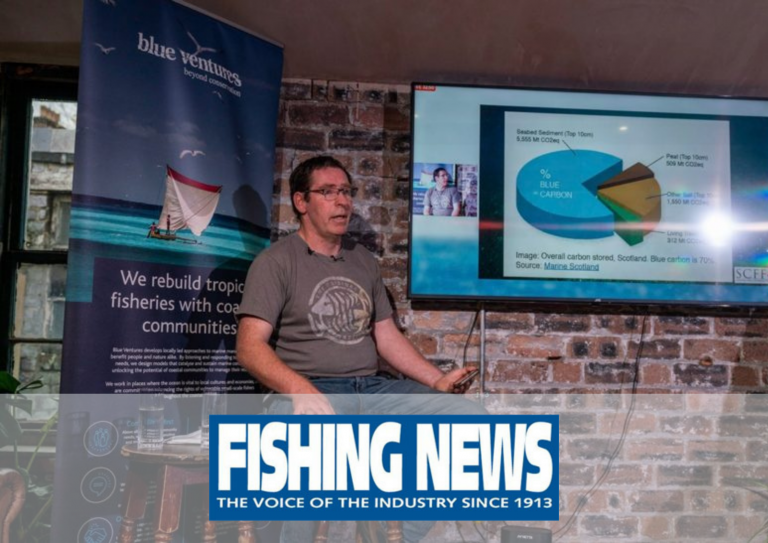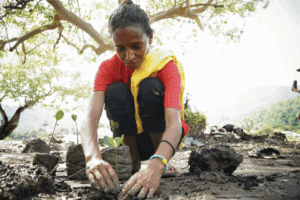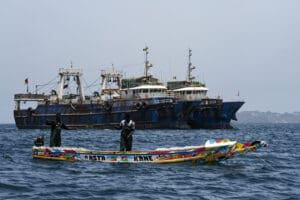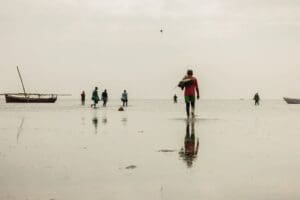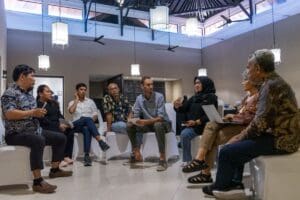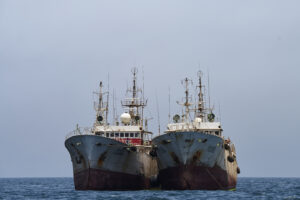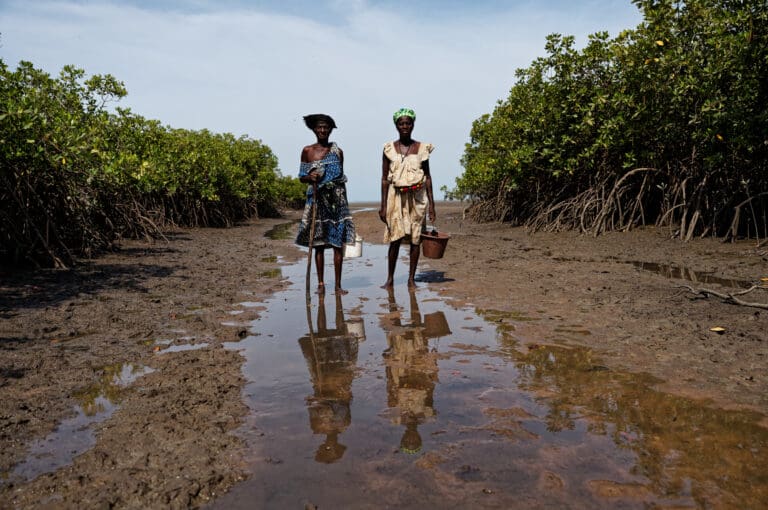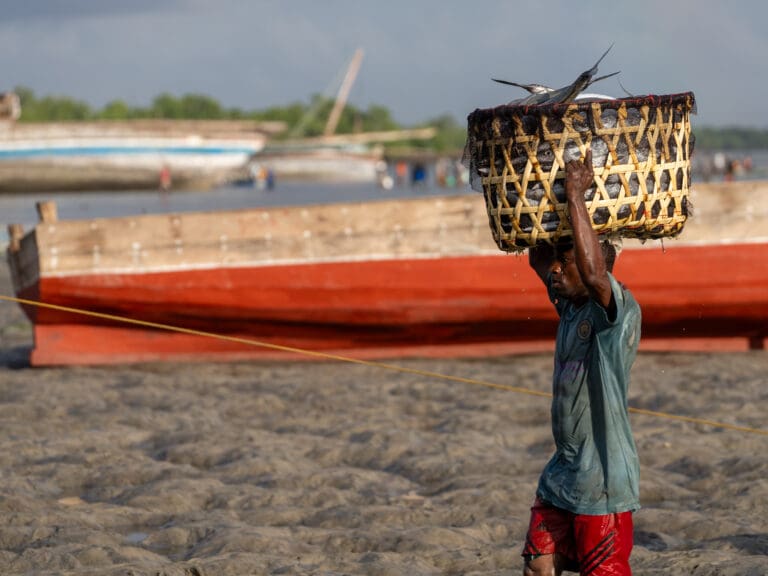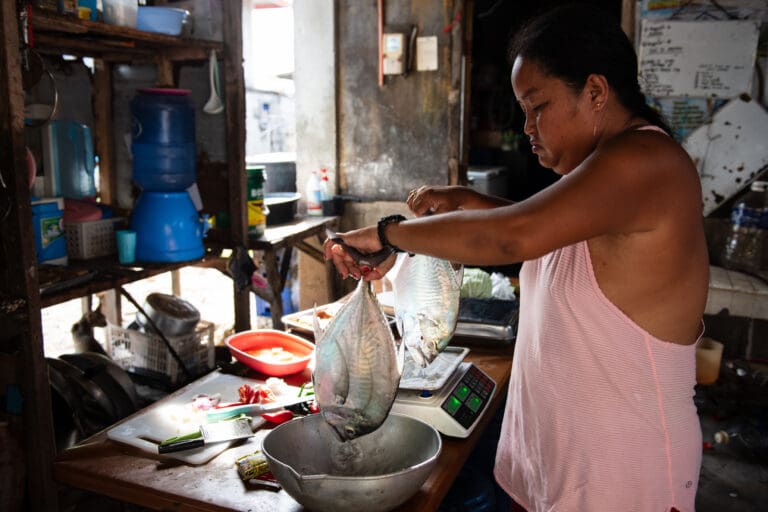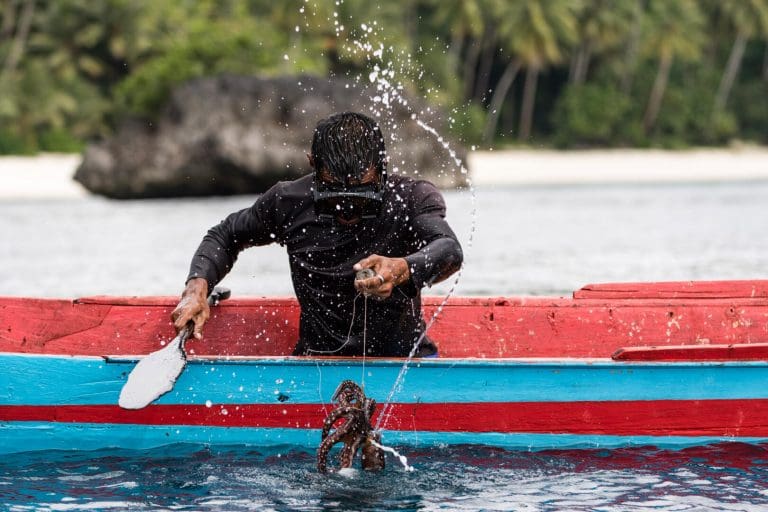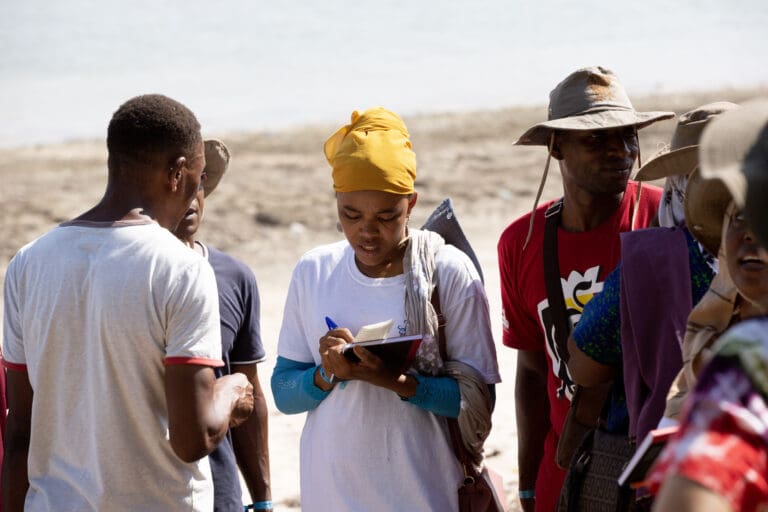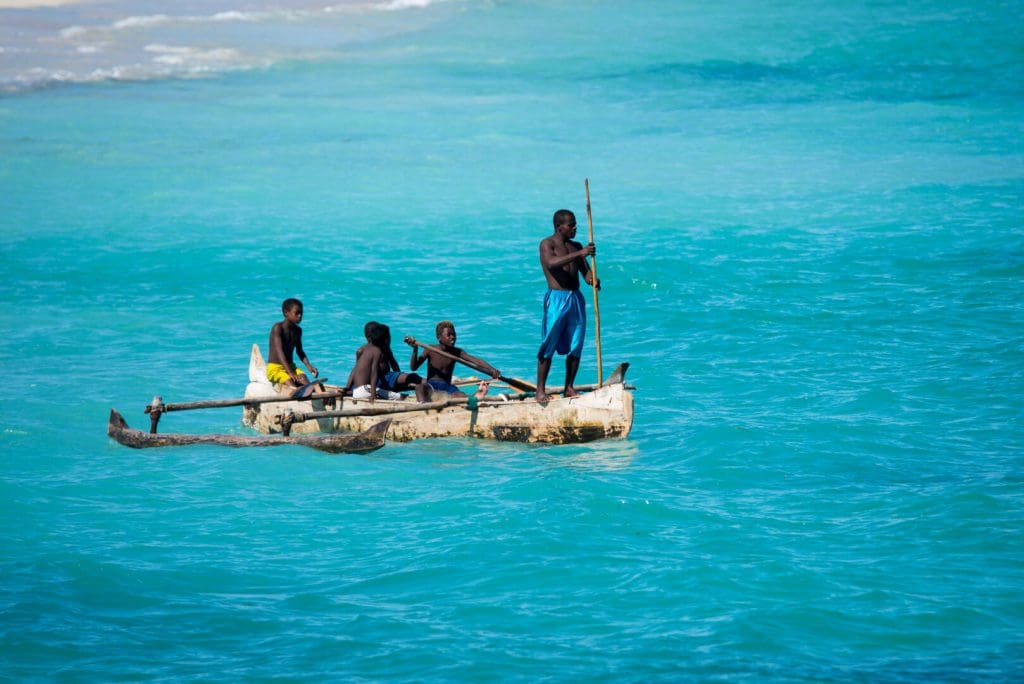Bottom trawling is a common way of catching fish that involves dragging heavy nets across the seabed. Around a quarter of the world’s seafood is caught this way, with vessels landing around 19 million tons each year, more than any other method. Seafloor sediments and habitats are the world’s largest carbon sinks, and disturbance by trawl nets is thought to contribute to the climate crisis, releasing up to 1.5 billion tonnes of CO2 each year.
Ahead of COP26, together with the Transform Bottom Trawling Coalition, we published a new briefing that summarises this emerging field of research, outlining the known major impacts from bottom trawling on greenhouse gas emissions and identifying key mitigation opportunities.
We partnered with the Coalition and Our Seas to host a hybrid panel event in Glasgow exploring ‘Bottom trawling and a zero-carbon future: what needs to change?’.
Scottish inshore fishermen participating in the panel event held at COP26 used the meeting to reiterate calls for the creation of a 0-3nm inshore zone in Scotland reserved for low-impact gears.
Read the full article on this call to action here.

